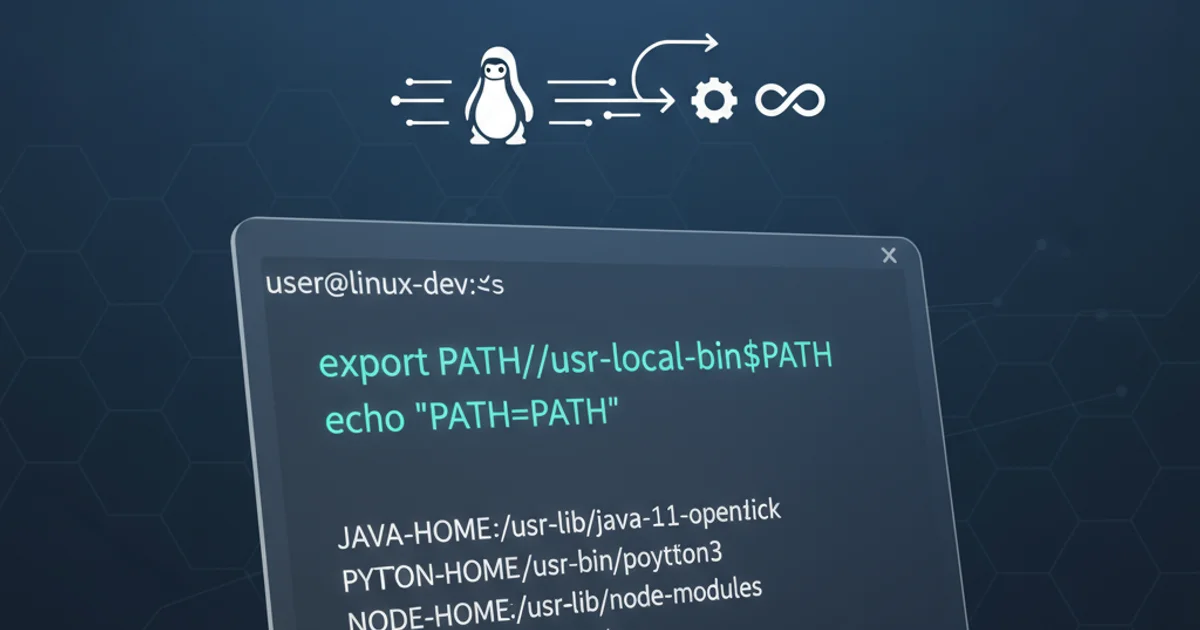Can I disable DNS lookup in PHP? I have the IP address and host name
Categories:
Disabling DNS Lookups in PHP: Optimizing Performance with Known IPs

Learn how to bypass DNS resolution in PHP when you already possess the IP address and hostname, enhancing application performance and reliability.
In many PHP applications, especially those interacting with internal services or known external APIs, you might already have the target server's IP address and its corresponding hostname. Performing a DNS lookup in such scenarios is redundant and can introduce unnecessary latency and potential points of failure. This article explores various PHP functions and techniques to disable or bypass DNS resolution, ensuring your application connects directly using the provided IP address.
Why Bypass DNS Lookups?
DNS lookups translate human-readable hostnames (like example.com) into machine-readable IP addresses (like 192.0.2.1). While essential for general internet browsing, this process adds a small but measurable overhead. When you already know the IP address, performing a DNS lookup becomes an extra step that can:
- Increase Latency: Each DNS query takes time, however minimal. Over many requests, this can accumulate.
- Introduce Failure Points: DNS servers can be slow, unresponsive, or misconfigured, leading to connection failures even if the target server is healthy.
- Reduce Control: Relying on external DNS can make your application susceptible to DNS-related issues outside your immediate control.
Bypassing DNS ensures a direct connection, which is often faster and more reliable for known endpoints.
flowchart TD
A[PHP Application] --> B{Known IP and Hostname?}
B -->|Yes| C[Direct Connection (Bypass DNS)]
B -->|No| D[Perform DNS Lookup]
C --> E[Target Server]
D --> F[DNS Server]
F --> D_IP[IP Address]
D_IP --> EDecision flow for DNS lookup bypass
Methods to Disable DNS Lookup in PHP
PHP's networking functions often perform DNS resolution by default. However, several strategies allow you to explicitly use an IP address while still providing a hostname for SSL/TLS certificate validation or HTTP Host headers.
1. Using fsockopen() or stream_socket_client()
These low-level socket functions allow you to specify the IP address directly. For HTTP requests, you'll then manually construct the Host header.
<?php
$ip = '192.0.2.1'; // Example IP address
$hostname = 'example.com'; // The actual hostname
$port = 80;
$fp = fsockopen($ip, $port, $errno, $errstr, 30);
if (!$fp) {
echo "$errstr ($errno)<br />\n";
} else {
$out = "GET / HTTP/1.1\r\n";
$out .= "Host: {$hostname}\r\n"; // Crucial for virtual hosts and SSL
$out .= "Connection: Close\r\n\r\n";
fwrite($fp, $out);
while (!feof($fp)) {
echo fgets($fp, 128);
}
fclose($fp);
}
?>
Bypassing DNS with fsockopen() for an HTTP GET request.
2. Using cURL with CURLOPT_RESOLVE
cURL is a powerful library for making HTTP requests. It offers a specific option, CURLOPT_RESOLVE, to provide a custom DNS mapping. This is ideal because it allows cURL to connect to the IP address while still using the hostname for SSL certificate validation and the Host header.
<?php
$ip = '192.0.2.1'; // Example IP address
$hostname = 'example.com'; // The actual hostname
$url = "http://{$hostname}/"; // Use the hostname in the URL
$ch = curl_init();
// Map hostname to IP address
curl_setopt($ch, CURLOPT_RESOLVE, ["{$hostname}:80:{$ip}"]);
// For HTTPS, you'd use port 443:
// curl_setopt($ch, CURLOPT_RESOLVE, ["{$hostname}:443:{$ip}"]);
curl_setopt($ch, CURLOPT_URL, $url);
curl_setopt($ch, CURLOPT_RETURNTRANSFER, true);
$response = curl_exec($ch);
if (curl_errno($ch)) {
echo 'cURL error: ' . curl_error($ch);
} else {
echo $response;
}
curl_close($ch);
?>
Using CURLOPT_RESOLVE to bypass DNS for a cURL request.
CURLOPT_RESOLVE for HTTPS, ensure the port in the resolve string matches the port in the URL (e.g., example.com:443:192.0.2.1). Also, the hostname in the URL must match the hostname in the resolve string for SSL certificate validation to work correctly.3. Using Stream Contexts with http or https Wrappers
PHP's stream wrappers, used by functions like file_get_contents() or fopen(), can also be configured to bypass DNS. This is achieved by setting the Host header and specifying the IP address in the peer_name or SNI_enabled context options, particularly for SSL/TLS.
<?php
$ip = '192.0.2.1'; // Example IP address
$hostname = 'example.com'; // The actual hostname
$context = stream_context_create([
'http' => [
'header' => "Host: {$hostname}\r\n"
],
'ssl' => [
'SNI_enabled' => true, // Enable Server Name Indication
'peer_name' => $hostname, // Use hostname for SSL certificate validation
'verify_peer' => true, // Always verify peer in production
'verify_peer_name' => true
]
]);
// For HTTP, connect directly to IP:
$http_response = file_get_contents("http://{$ip}/", false, $context);
echo "HTTP Response:\n" . $http_response . "\n\n";
// For HTTPS, this approach is more complex as the 'Host' header alone isn't enough
// to direct the SSL handshake to the IP while validating the hostname.
// CURLOPT_RESOLVE is generally preferred for HTTPS with IP addresses.
// If you must use streams for HTTPS, you'd typically connect to the IP
// and rely on the 'peer_name' for SNI and certificate validation.
// Example (conceptual, may require more robust error handling):
// $https_response = file_get_contents("https://{$ip}/", false, $context);
// echo "HTTPS Response:\n" . $https_response;
?>
Using stream contexts to set the Host header and peer name for DNS bypass.
CURLOPT_RESOLVE is generally the most robust and straightforward method to bypass DNS while ensuring proper SSL certificate validation. Stream contexts for HTTPS with direct IP connections can be tricky due to how SSL/TLS handshakes and certificate validation interact with IP addresses versus hostnames.